The bar is set high when it comes to quality of fresh produce and continues to be gradually lifted. “To meet today’s expectations of buyers and consumers, it is important for quality checks to be done throughout all stages of the supply chain,” says Greg Akins, President of Catalytic Generators. The company and its sister company, QA Supplies, provide tools for optimum quality control throughout the supply chain.
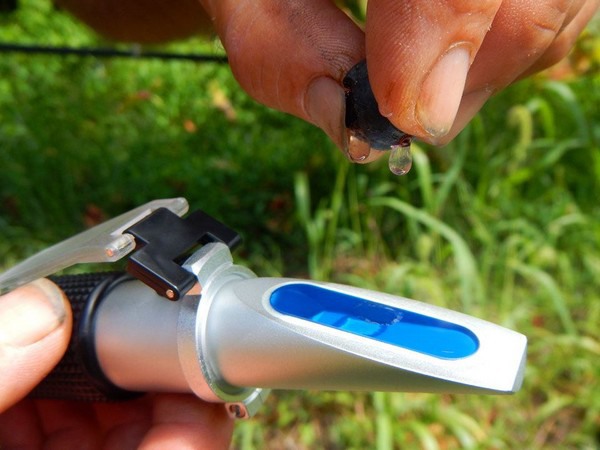 Digital refractometer
Digital refractometer
Pre-harvest: measuring brix and firmness
Quality testing starts before produce is even harvested. By measuring brix and fruit firmness, fruit maturity can be determined, indicating when the fruit is ready to be harvested. “Digital refractometers and handheld penetrometers help with gauging fruit maturity,” shared Akins. When testing fruit firmness, the penetrometers automatically freeze the peak firmness reading. With this added convenience, users don’t need to watch the gauge while correctly inserting the plunge tip into fresh fruit. Once the measurement has been taken, the penetrometer can be pulled out of the fruit and the peak reading can easily be read on the dial. “We offer different types of penetrometers, depending on the type of fruit, but the ones from the FT-series are unique as they can be handheld, portable units or mounted using a manual test stand for firmness.” Alongside these tools, produce knives are also being used during this stage of quality checks.
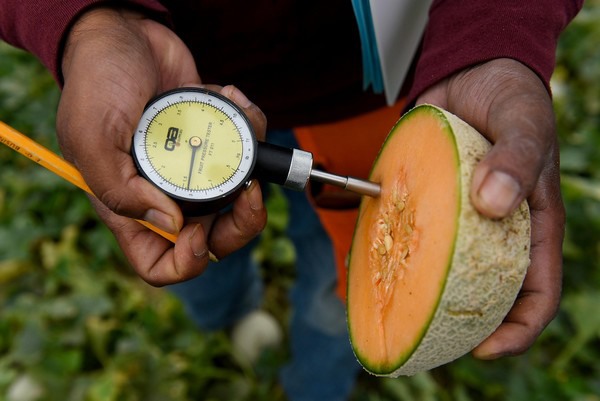 Penetrometer
Penetrometer
Specifically for growers, packers, and ripeners of avocados, the F-751 Avocado Quality Meter can be used to non-destructively measure avocado dry matter. Dry matter is the primary metric avocado growers and packers rely on to judge fruit maturity and traditionally, the process to assess dry matter is both time and labor-intensive. Using near-infrared light, non-destructively and within a matter of seconds, the avocado producer can accurately assess avocado dry matter while saving time, saving fruit and often, increasing the accuracy of their dry matter assessments.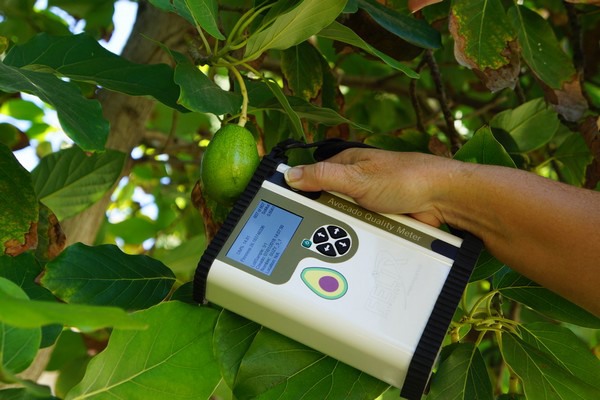 Avocado Quality Meter
Avocado Quality Meter
Post-harvest: transportation
The next quality check takes place when produce is transported to a warehouse or distribution center. “During the transportation phase, we recommend utilizing data loggers that monitor temperature, which is key to maintaining quality and preventing defects. Below recommended levels, chill damage could occur and a temperature that’s on the high side could result in accelerated ripening and decreased shelf life. “Keeping the transport temperature within an acceptable range is critical for shippers and receivers.”
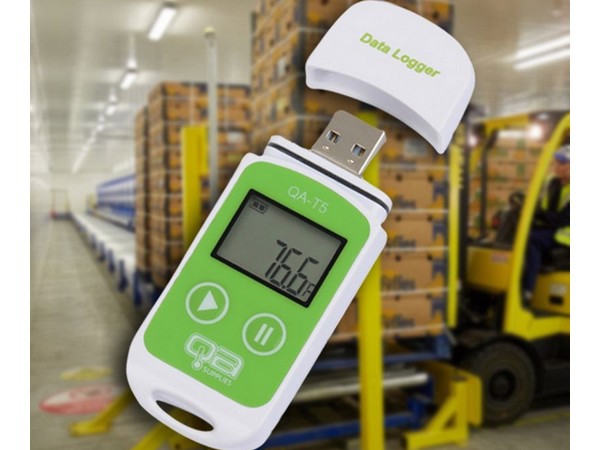
In the warehouse
Once the fruit has been accepted by the warehouse, one of the first quality control checks is to measure pulp temperature as it may differ from air temperature. “This is especially true when the product is not in forced air storage, but temperature variation can occur in any controlled storage environment,” said Akins. As some produce ages during transport and storage, the heat of respiration may cause the internal temperature to rise above the room air temperature. Knowing this difference allows facilities to make adjustments and maintain the best quality. “A great example are banana ripening charts as the temperature recommendations on the charts are based on pulp, not air temperatures.” The internal temperature can be checked with a digital probe thermometer, available in economy and premium options. The premium alternative offers a greater range and tends to have a better degree of accuracy. Because of the higher price point, usually one or two are purchased for a warehouse whereas the economy option is being made available to everyone in the warehouse or field.
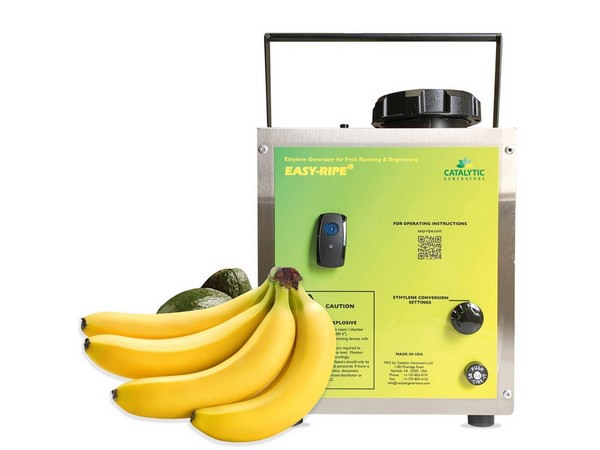 Ethylene generator
Ethylene generator
Ripening
Once the internal temperature has been determined, the shipper/ripener has a better idea of exactly how ripe or mature the produce is. “This helps making decisions on what type of storage conditions will maximize the quality and shelf life of the fruit,” continued Akins. “If ethylene exposure is needed, we recommend ripening via ethylene application with our generators and Ethy-Gen® II Ripening Concentrate.” These are the only generators with certifications by both UL and TÜV and they produce no harmful byproducts when converted into ethylene. “Because safety matters, we make sure our generators are certified by third-party recognized testing laboratories.” The ripening concentrate’s active ingredient is all-natural as well as GMO-free and is the only ‘ripening fluid’ approved by both the US EPA and the UK Chemicals Regulation Directorate (CRD).
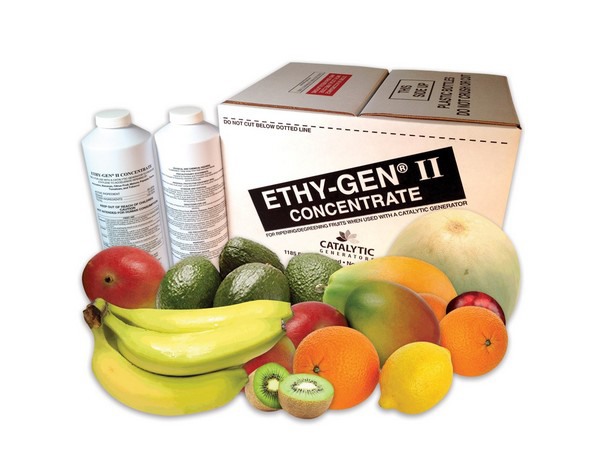 Ripening concentrate
Ripening concentrate
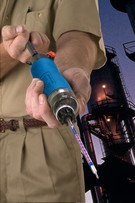 Naturally, ethylene is odorless and without measuring the level in the room, there is no way to know it is present in the ripening room. “For optimal safety, the ethylene created from Catalytic’s concentrate has a slight sweet smell. That way, customers know it is present in the ripening room.” Another benefit of Catalytic’s generators is that ethylene levels need to only be checked initially as opposed to continuously. “The initial levels need to be checked to determine the appropriate ethylene production level of the generator for each ripening room,” said Akins. Thereafter, only occasional ethylene level checks are needed as a ‘confirmation’ that levels remain in the correct range. The generator consistently and dependably creates small amounts of ethylene and is great at maintaining a set level. Ethylene levels can be measured with ethylene testing tubes (pictured right) that can be used with an Air Sampling Kit, or the F-960 Ripen IT! Gas Analyzer, or F-940 Store It! Gas Analyzer.
Naturally, ethylene is odorless and without measuring the level in the room, there is no way to know it is present in the ripening room. “For optimal safety, the ethylene created from Catalytic’s concentrate has a slight sweet smell. That way, customers know it is present in the ripening room.” Another benefit of Catalytic’s generators is that ethylene levels need to only be checked initially as opposed to continuously. “The initial levels need to be checked to determine the appropriate ethylene production level of the generator for each ripening room,” said Akins. Thereafter, only occasional ethylene level checks are needed as a ‘confirmation’ that levels remain in the correct range. The generator consistently and dependably creates small amounts of ethylene and is great at maintaining a set level. Ethylene levels can be measured with ethylene testing tubes (pictured right) that can be used with an Air Sampling Kit, or the F-960 Ripen IT! Gas Analyzer, or F-940 Store It! Gas Analyzer.
“By consistently using these post-harvest tools, perfectly ripened pallets of fruit can be delivered to customers all over the world,” mentioned Akins.
For more information:
Greg Akins
Catalytic Generators
Tel: +1 (757) 855-0191
info@catalyticgenerators.com
www.catalyticgenerators.com
